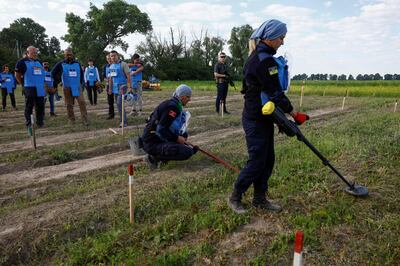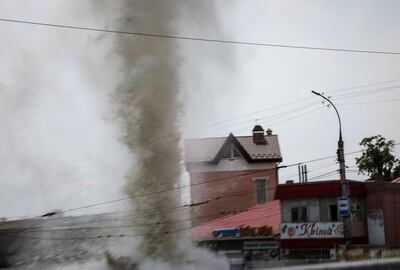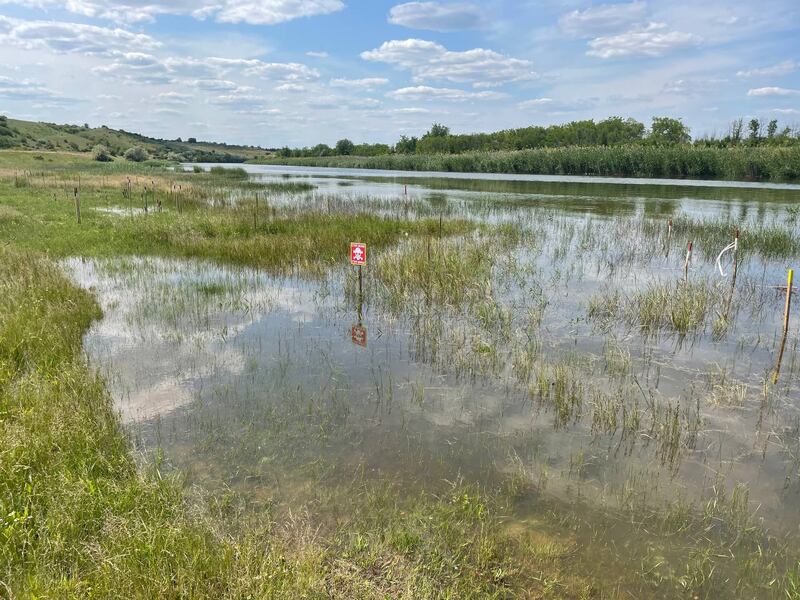Vast frontline minefields have been scattered across great distances in Ukraine destroying careful mine-mapping surveys, experts have told The National.
The cost of removing the hundreds of thousands of explosive devices is estimated at $37 billion and will take "decades" to complete.
Worldwide anti-mining charity the Halo Trust, responsible for clearing mines from the war zone, has described “floating bombs” caused by the destruction of the Kakhovka dam on Tuesday.
“But the bigger danger is that they're no longer in the pattern that they were laid in and no longer in the locations where the front line was,” said Paul McCann, Halo Trust head of communications. “We just don’t know where they’ve ended up and until the waters recede we just won’t know what we’re facing. They could be lodged against buildings, swept up in reeds, all sorts of dangerous places scattered across a wide area.”
The group can operate no nearer than 30 kilometres from the front line, a distance from which it intricately surveys and maps the precise location of minefields.
The scale of the task was highlighted by the 5,000 anti-tank mines Halo Trust workers have pulled from the banks of the Inhulets, a tributary to the vast Dnipro river in the past month.
That was a record number, exceeding the total cleared by Halo in Afghanistan, Angola and Zimbabwe, but the staked-out minefields have been heavily disrupted by the flooding.
“That's just the bits that we know about, as other areas on the front line are inevitably going to be affected,” said Mr McCann.

Intelligence from the US and elsewhere has blamed Russia for detonating charges placed in the Kakhovka dam, causing massive environmental damage, an allegation Moscow denies.
“Letting an incredibly large amount of water into an incredibly heavily mined area is just a very, very unhealthy combination,” said Mr McCann, "especially as Ukraine is one of the most intensely mined places in the world right now.”
That density of mines is likely to increase on the eastern bank of the Dnipro where Russia has heavily defended its position.
Satellite imagery has shown hundreds of kilometres of trenches defended by what appear to be minefields. “This adds a huge level of complexity and risk to surveying minefields because it's now harder to find the defensive lines,” said Mr McCann. “There's literally decades of mining work to be done.”

He said James Cowan, Halo’s director, had warned for “every day of fighting is a month of mine clearance”.
The World Bank and the UN produced an estimate on Thursday that Ukraine’s landmine clearance could cost $37.6 billion from a reconstruction budget of $400 billion.
The majority of mines being found are the TM-62s that contain 7.5kg of explosive, enough to penetrate a tank hull, but have caused numerous casualties among cars passing over them in Ukraine.
Anti-tank mines, responsible for more than 100 civilian deaths since the war broke out, have been buried 10cm to 20cm under road surfaces, with only the detonator tip in view.







